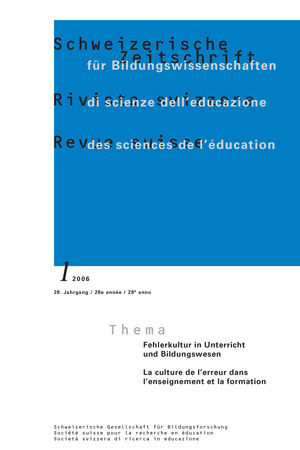Dimensions of Mistake Culture in School: The Measurement The students’ inquiry on mistake culture in the classroom, for grades 4 – 9.
DOI:
https://doi.org/10.24452/sjer.28.1.4720Abstract
This contribution to mistake culture depicts how a primarily normative approach on dealing with mistakes in school has been processed to a concept that can be measured, and how this process in turn has had an effect on the further development of the concept. The steps of this development are to a certain extent represented in the current version of the inquiry presented in this article. The now Students’ inquiry on mistake culture in the classroom called instrument is, with its 28 items, a handy questionnaire. It contains four scales, (1) orientation toward learning, (2) mistake friendliness, (3) transparency of norms, and (4) mistake anxiety. The third scale with its questions on how norms and rules are dealt with and how comprehensible they are, is the latest innovation on the path of differentiating and operationalizing the term, and is therefore depicted and discussed in most depth. Further comments address, expectedly, the methodological aspects and details of the questionnaire. Not all of the test-statistical values are fully satisfying yet, which points to the fact that the inquiry still needs to be further developed, as well as to the potential of the concept still to be fully discovered.
Downloads
Downloads
Published
Issue
Section
License

This work is licensed under a Creative Commons Attribution 4.0 International License.



